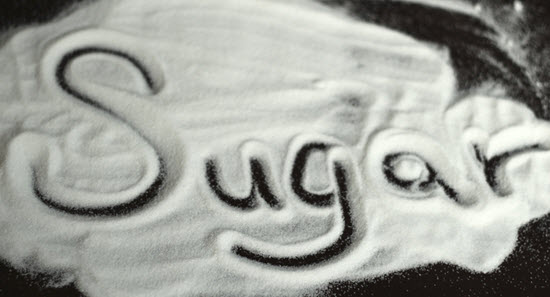
In a previous post, I listed the DSM-5 criteria for addiction and left tolerance and withdrawal for another time because they take a bit more explanation. For the sake of completeness, here they are. I promise to keep this short!
Tolerance and withdrawal are linked with addiction, but addiction can occur without them. Once called the classic markers of addiction (criteria 1 and 2 in the DSM-IV), tolerance and withdrawal have been moved to 10th and 11th places in the DSM-5 criteria for substance abuse disorder.
Tolerance
Tolerance is reduced effectiveness of an addictive substance. We”™ll talk about sugar. A larger dose is needed to obtain the same effect, which may increase sugar intake.
Tolerance involving endorphins occurs with sweet substances. Sugar and artificial sweeteners can both change endorphin (beta-endorphin) function through up- or down-regulation. Endorphins are produced in response to pleasure or pain.
Serotonin is another brain chemical that alleviates pain, and tolerance can occur to its effects, as well. Serotonin production is higher when insulin release is higher, so more sugar means more serotonin.
Carb sensitivity — the exaggerated release of extra insulin when eating sugar — would also increase serotonin production.
Withdrawal
Withdrawal is a predictable set of symptoms that most addictive substances will produce when chronic use stops or drops.
Withdrawal includes physical symptoms and negative moods, both associated with low levels of specific brain chemicals.
It”™s common to use more sugar, or a closely related food, like fruit, to relieve or avoid withdrawal symptoms.
Addiction involves two types of reinforcement. Positive reinforcers establish and sustain habits because they cause pleasure. That”™s what typically creates an addiction in the first place.
Negative reinforcers establish and sustain habits because they alleviate pain or distress. If eating sugar takes away the discomfort of withdrawal, the sugar is a negative reinforcer. That”™s true even though it started as a positive reinforcer.
Most addictions will run in this direction — toward seeking negative reinforcement to stop withdrawal — no matter how “positive” the reinforcing effects of the substance or food were in the beginning.
Any positive reinforcer can be addictive. Any negative reinforcer can be addictive, too. The negative reinforcer can be either a substitute or the substance itself.
So anything that”™s substituted for sugar and takes away withdrawal symptoms (negative reinforcement) has addictive potential. I”™m thinking fruit, agave, sweeteners.
What Withdrawal Looks Like
80% of self-labelled chocoholics reported irritability or depression when avoiding or cutting down on chocolate. They felt preoccupied with chocolate at those times. Abstinence from chocolate led to relapse and overeating of chocolate in all participants.
One thing that occurs during withdrawal is craving. A craving is an intense urge or desire for a substance. Cravings are typically highest when withdrawal is most severe — and the greater the intake, the greater the withdrawal and craving.
Cravings may be triggered externally (seeing or smelling the sugary food) or internally (tasting a little). Withdrawal is also internal triggering.
Among women, chocolate is the most craved food, and the cravings peak premenstrually. Chocolate contains stimulants and mood-elevators, including caffeine, theobromine (similar to caffeine), tyramine and phenylethylamine (the being-in-love chemical). These were defined as the “psychoactive components” of chocolate.
Yet, when chocolate wasn”™t available, all the substitutes were sweet, rather than stimulants like caffeine.
PMS and morphine withdrawal share several symptoms, including cramping, carb craving, sweating, fever, increased appetite, insomnia, irritability and nausea. During PMS, endorphins drop, so PMS has been described as periodic withdrawal from endogenous opioids (endorphins).
Or periodic morphine withdrawal??
- New Year’s Resolutions: A Sugar Addict’s Survival Guide - April 15, 2024
- Motivation vs. Enthusiasm - October 12, 2023
- Why Exercise Shouldn’t Be Just One Thing - November 9, 2022
